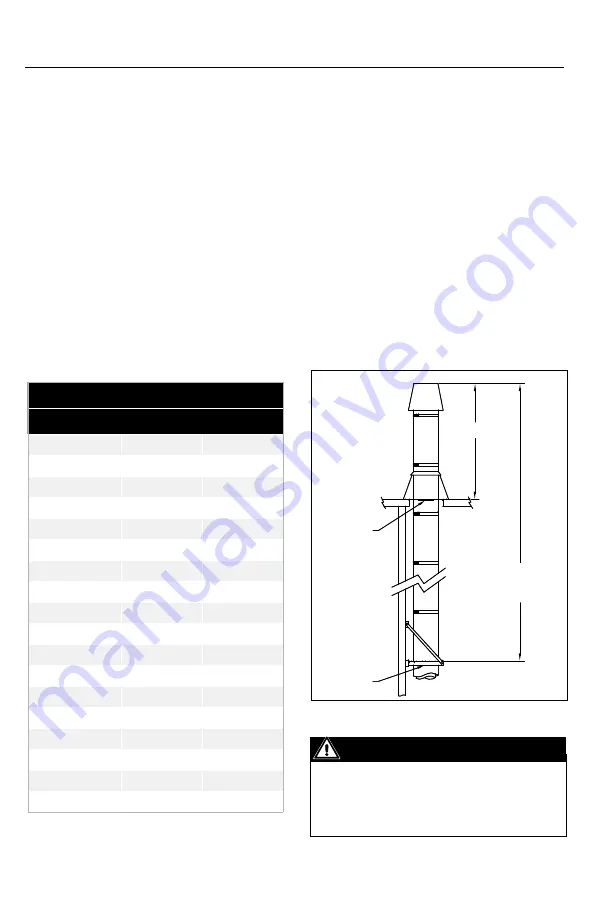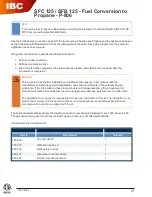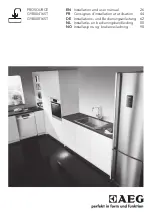
11
away from the locking band. It is essential
that these parts be properly installed and
provided with adequate support and
guidance to prevent binding or excessive
bending forces. (See detailed installation
information contained on page 19,
Thermal Expansion).
CHImnEy WEIgHt
Chimney weight is given in pounds per foot
of chimney for each diameter. It is important
to know the weight of the chimney section
for chimney support or guiding. Chimney
weight (Table 8) along with maximum
chimney height (Table 6) are necessary to
calculate the proper anchor strength needed
with wall supports (WS), Anchor Plate (AP)
supports and Suspension Bands (SB).
Table 8
Chimney Weight in lb/ft
Inside Diameter
Model DIS
Model DAS
5
7
4
6
8
5
8
10
6
10
12
8
12
14
9
14
16
10
16
18
12
18
20
13
20
22
14
22
24
15
24
28
19
26
30
20
28
32
21
30
34
23
32
36
24
34
38
25
36
40
27
Example: Model DIS, 6” diameter section of 25 feet in length from
table 8, weight in lb/ft = 8. Total weight 8 x 25 = 200 lbs
CHImnEy guyIng anD BraCIng
1. Proper guying and bracing is essential
for part of the chimney that extends above
the roof or parapet wall. The chimney at this
point is subject to wind conditions and needs
special attention for proper stabilization.
2. If the stack above the roof does not exceed
dimension H, no special guying or bracing
is required. However, to protect the flashing
from lateral movement, a guide must be
installed at the roof level. See Figure 7).
3. For stack height above the roof that needs
guying or bracing, a support, a small length
and a expansion length must be installed
near the roof level to absorb the thermal
expansion and minimise this effect on the
guy wires or brace.
Figure 7
Important
If Dimension “H” exceeds the value in table
7, use bracing or cable guying to stabilize
chimney section above the roof. See Notes
3, 4, 5 and Figure 8.
Maximum
Height
See Table 6
H*
Guide
Support
No Guying or Bracing
Required












































